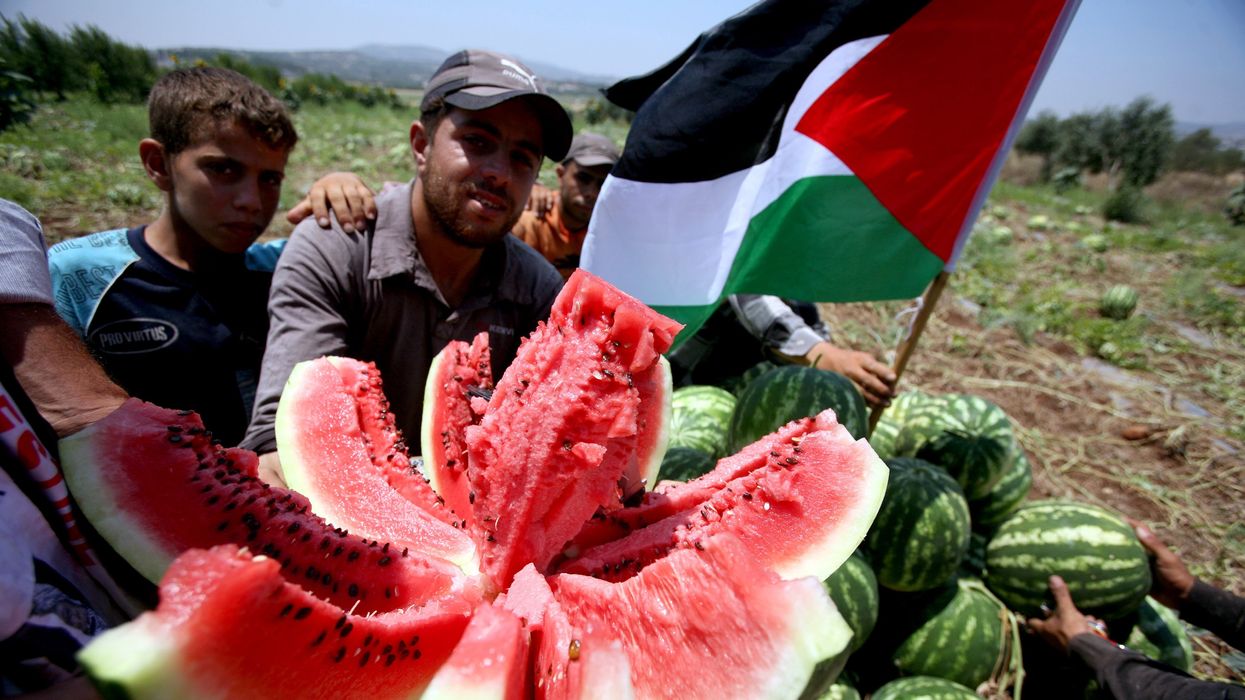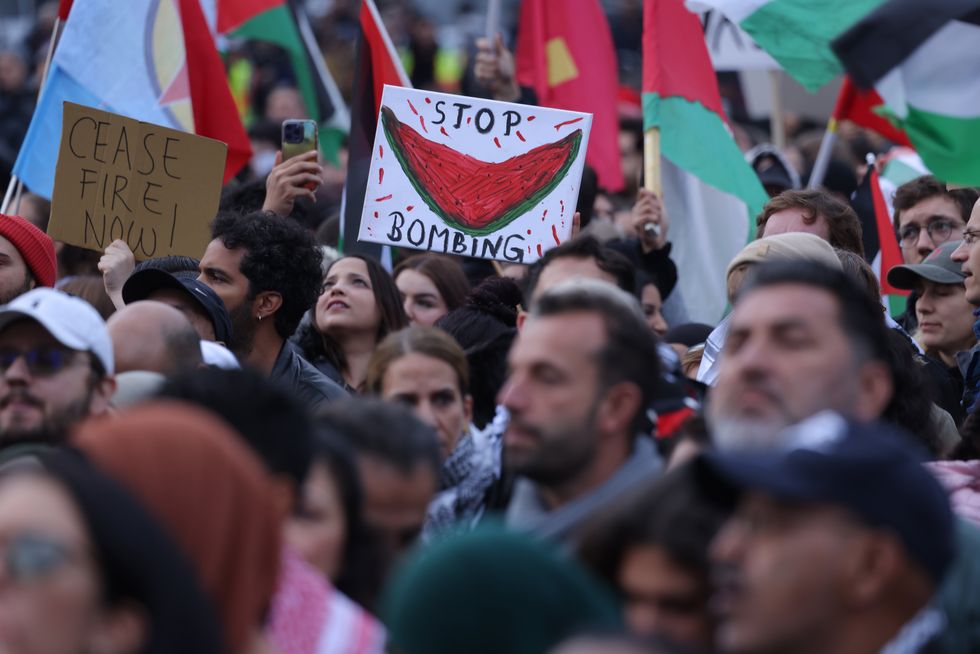
Palestinian farmers in the northern Gaza Strip in 2021
To many it is just a humble fruit – but for Palestinian people the watermelon is a powerful symbol of national identity.
Since the latest outbreak of war in the Middle East last month, the fruit has been cropping up all over the internet as people express solidarity with Palestinians living under Israeli bombardment in Gaza.
Hamas-led militants attacked Israel on 7 October, and killing 1,400 people. Israel's military response has killed more than 10,000 Palestinians as of 6 November, including 4,000 children, according to reports.
Amid huge protests against the escalation in violence, pictures and artworks of the watermelon have emerged on social media, while the fruit's emoji has become inextricably linked with Palestine.
But why did this happen, and what does it mean?
Historic symbolism
The watermelon has been a Palestinian symbol for decades.
It first became widespread after the Six-Day War in 1967, when Israel seized control of the West Bank and Gaza and made public displays of the Palestinian flag a criminal offence in the regions.
To get around this, Palestinians started using the fruit instead, which bears the sale colour scheme of red, green, black and white.
The watermelon is also widely cultivated in Palestine from the West Bank to Gaza, and features prominently in some Palestinian recipes.

More recent use
Israel officially lifted the flag ban in 1993 as part of the Oslo Accords, which involved mutual recognition from both sides, and represented the first formal agreements to try to resolve the decades-long conflict.
But violence has been common and widespread in the intervening three decades, and Israeli authorities have frequently cracked down on the flag during times of tension, claiming the flag could “disturb peace”.
In 2007, following a months-long outbreak of violence in the region, artist Khaled Hourani created The Story of the Watermelon for a book called Subjective Atlas of Palestine. In 2013, he picked out one watermelon print and called it The Colours of the Palestinian Flag, which has been viewed globally since.
In 2021, the symbol became widespread again, after an Israeli court ruled that Palestinian families based in the Sheikh Jarrah neighbourhood of East Jerusalem would be evicted from their homes to make way for settlers.
And in January, Itamar Ben-Gvir, Israel’s national security minister, gave police the power to confiscate Palestinian flags.
Months later, a law nearly passed which would have banned people from displaying the flag at state-funded institutions, including universities. The bill passed preliminary approval but collapsed during recent Israeli elections.
In recent weeks
During the most recent conflict, social media has played an increasingly important role for people who are trapped in Gaza, trying to contact the outside world and get information.
But many have claimed that posts and messages with overt Palestinian symbols are being restricted by tech giants like Meta, which runs Instagram.
People have claimed their content is being “shadow-banned”, meaning it is quietly deprioritised by Instagram’s algorithm. Others have said their posts are actively being over-moderated.
Meta has denied this, calling the issues “a glitch”. The alleged phenomenon has been documented for years, but claims have become more widespread in the last month.
Here, the sliced watermelon emoji has again become an important symbol to express solidarity and empathy for those trying to survive the weeks-long Israeli bombardment of the region.
How to join the indy100's free WhatsApp channel
Sign up to our free indy100 weekly newsletter
Have your say in our news democracy. Click the upvote icon at the top of the page to help raise this article through the indy100 rankings.













